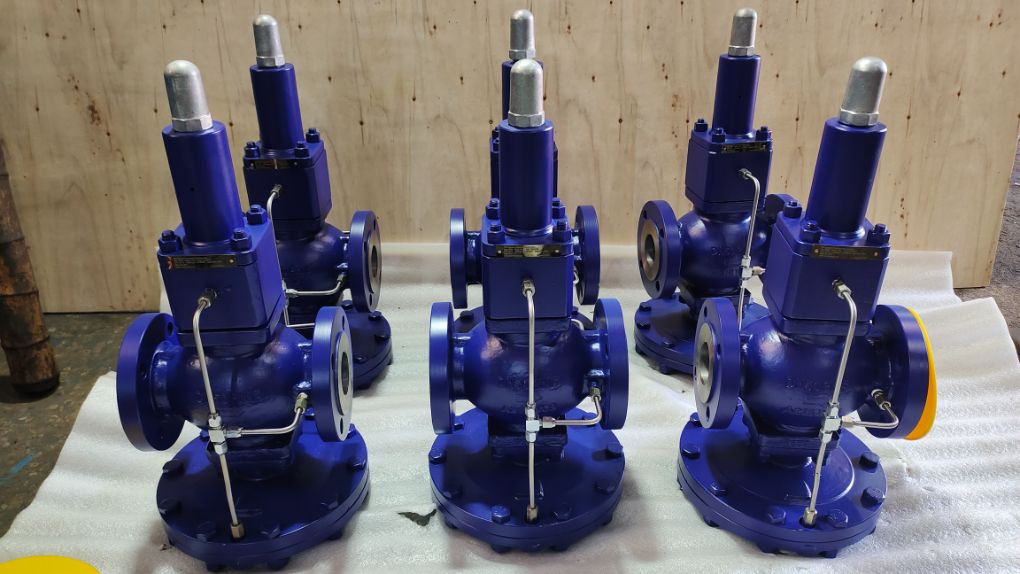
Welcome to our comprehensive guide on pilot operated valves. In this guide, we'll dive deep into the functionality, applications, and benefits of pilot operated valves. We'll also explore the different types of pilot operated valves available in the market and the factors to consider when choosing the right pilot operated relief valve for your application.
Table of Contents Add a header to begin generating the table of contentsPilot operated valves are a critical component of industrial control systems, used to regulate the flow/pressure of fluids in various processes. These valves offer precise control, high capacity, and a wide range of applications, making them an essential choice for many industries.

Pilot operated valves, also known as pilot valves, are control valves that use a small pilot valve to control the larger main valve. The pilot valve is typically operated by a pressure signal or an electric signal, which in turn controls the flow of fluid through the main control valve.
Pilot operated valves consist of the following key components:
The working principle of a pilot operated valve is relatively straightforward. When the system requires a change in flow, the pilot valve senses the change and adjusts its position. This change in pilot pressure and position allows fluid to flow into or out of the main valve, causing it to open or close as needed. The result is a highly responsive, accurate control system that can manage complex industrial processes with ease.
| Abbreviation | Example | Meaning |
| L | TD42 L | Left to right flow |
| R | TD42 R | Right to left flow |
| Z | FT14 Z Sc | Z axis view (for example, the view looking through the centre orifice) |
| Fi | ILVA Fi L | Full image |
| V or Ver | FT14 V Cover Sc | Vertical flow |
| Fl | BPT21 L Fl | Flanged |
| Sc | BPT21 L Sc | Screwed |
| Bw | AV45 Bw L | Butt weld |
| Wd | BTD52 L Wd | Weld |
| B/down or Bd | TD42 L Bd+Iso | Blowdown version |
| Iso or Isotub | TD42 L Bd+Iso | Isotub option (for Thermodynamic steam traps) |
| V or Ver | FT54V* | Vertical version |
| H or Hor | FT54H* L | Horizontal version |
| SLR | FT14 L SLR Sc | Steam lock release option |
| # | BC 3200# | Insert the drawing using a scale factor of 1:1 |
| * | BSA1* L | More than one product shares this drawing (for example, the BSA2 & BSA3 look the same as the BSA1 so use the same drawing) |
There are two main types of pilot-operated valves: direct-acting and pilot operated. Direct-acting valves are simple and reliable, but may not be suitable for higher flow rates or more complex systems. Pilot-operated valves, on the other hand, use a small pilot valve to control the flow of fluid through the main valve. This allows for precise control and modulation of flow rates, making them ideal for larger systems or applications that require fine-tuning.
Direct-acting valves are the simplest type of pilot operated valve. They operate by using a spring-loaded plunger to control the flow of fluid pressure relief valve. When pressure is applied to the plunger, it opens the valve and allows fluid to flow through. When pressure is removed, the spring returns the plunger to its original position, closing the valve.
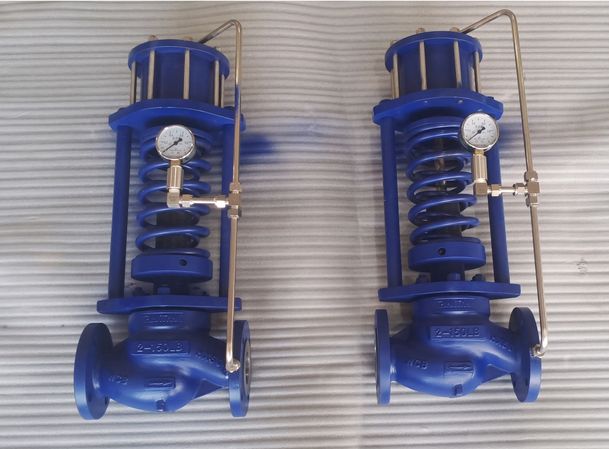
Direct acting valves are typically used in low-flow applications where precise control is not required. They are reliable and easy to maintain, but may not be suitable for larger systems or applications that require more precise control.
Pilot operated valves use a small pilot valve to control the flow set pressure of the fluid through the main valve. The pilot valve is typically controlled by a solenoid or other type of actuator, which opens and closes the valve based on the input signal. This allows for precise control of flow rates and modulation of pressure, making them ideal for larger systems or applications that require fine-tuning.

| 1 | Bottom Cover | A216Gr.WCB |
| 2 | Bottom Shell | #20 Carbon Steel |
| 3 | Diaphragm | SS Metal |
| 4 | Body | A216Gr.WCB |
| 5 | Stem | SS304 |
| 6 | Seat | SS304 |
| 7 | Plug | SS304 |
| 8 | Main Spring | 50Gr.VA |
| 9 | Bonnet | A216Gr.WCB |
| 10 | Cap | A216Gr.WCB |
| 11 | Adjusting Spring | 60Si2Mn |
| 12 | Adjusting Screws | #35 Carbon Steel |
| DN | L | H1 | H | D | D1 | D2 | f | b | Z-φd |
| 50 | 230 | 270 | 260 | 160 | 125 | 100 | 3 | 18 | 4-φ18 |
There are several types of pilot operated valves available in the market, including:
1.Direct Acting Pilot Valves: These valves use a direct acting pilot valve to control the main valve. They are typically used in low-pressure applications.
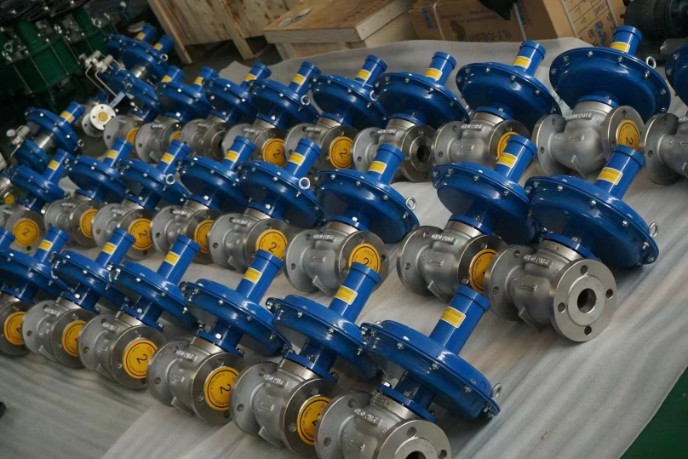
2. Indirect Acting Pilot Valves: These valves use an indirect acting pilot valve to control the main valve. They are typically used in high-pressure applications.
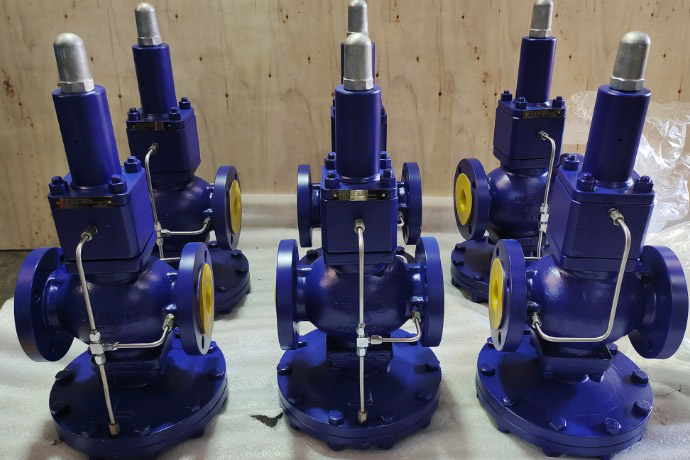
3. Differential Pressure Pilot Valves: These valves use a differential pressure pilot valve to control the main valve. They are typically used in applications where the pressure drop across the valve is high.
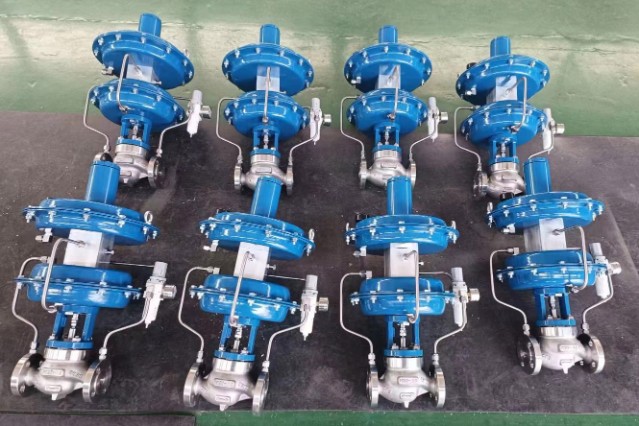
When it comes to selecting the right pilot operated valve for your application, there are a few key factors to consider. Pilot operated valves are an essential component in many hydraulic systems, and selecting the wrong valve can lead to inefficiencies, downtime, and increased costs. In this article, we will cover the different types of pilot operated valves, how to choose the right one for your application, and best practices for installation and maintenance. There are several factors to consider, including:
Make sure the valve is rated for the pressure and temperature of the fluid in your system.
The pressure range is the range of pressures that the valve is designed to operate within. This includes both the inlet pressure and the outlet pressure. It is important to select a valve that can handle the pressure range required by your system.
The flow rate is the amount of fluid that needs to pass through the valve in a given time period. This is typically measured in gallons per minute (GPM) or liters per minute (LPM). Selecting a valve with the appropriate flow rate is critical to ensuring proper system performance.
The size of the valve refers to the diameter of the valve orifice. This is typically measured in inches or millimeters. Selecting the right valve size is critical to ensuring proper flow rates and pressure drop.
Make sure the valve is made of the right material for your application.
The pilot operated valve must be compatible with the type of fluid being used in the system. This includes considerations such as fluid viscosity, temperature, and chemical compatibility.

Pilot operated valves are commonly used in a wide range of industries, including oil and gas, chemical, pharmaceutical, and food and beverage. Some of the common applications of pilot operated valves include:
Pilot operated valves are often used to control the pressure of fluids in pipelines and tanks. By using a pilot valve to control the main valve, the pressure can be maintained at a constant level, even with changes in flow rates.
Pilot operated valves can also be used to control the temperature of fluids in a system. By using a temperature sensor and a pilot valve, the main valve can be adjusted to maintain the desired temperature.
Pilot operated valves can also be used to control the flow of fluids in a system. By using a flow meter and a pilot valve, the main valve can be adjusted to maintain a specific flow rate.
Pilot operated valves have a wide range of applications in various industries, including:
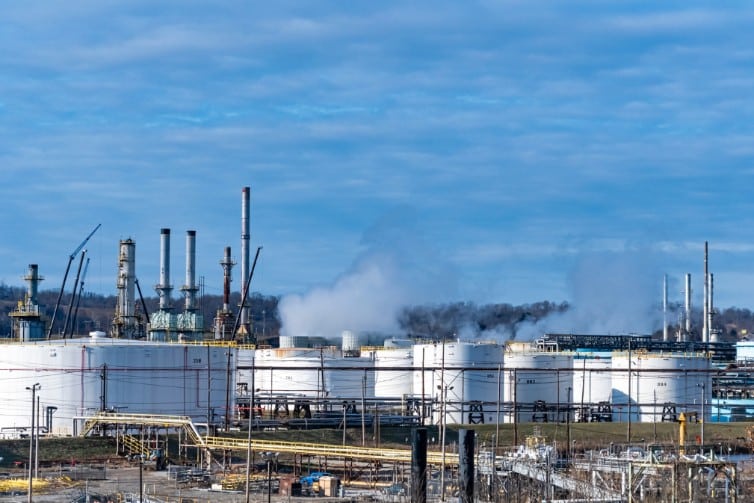
Pilot operated valves are essential components in various industrial and commercial systems, providing efficient flow control and regulation. To keep pilot operated relief valves ensure their proper functioning and longevity, regular maintenance and troubleshooting are necessary. Here are some key maintenance and troubleshooting tips for pilot operated valves:
Valve fails to open or close:
a. Check the pilot valve for any blockages or debris. Clean and replace if necessary.
b. Inspect the diaphragm or piston for damage. If damaged, replace the faulty component.
c. Ensure that the pressure differential is within the operating range specified by the manufacturer. If the pressure is too low, the valve may not function properly.
Valve leaks:
a. Inspect the valve seat for damage or debris. Clean or replace the seat if necessary.
b. Check the diaphragm or piston for damage or wear. Replace if needed.
c. Verify that the valve is properly assembled and tightened. If loose, tighten the valve components.
Valve chatters or vibrates:
a. Ensure that the flow rate is within the valve’s specified operating range. If the flow rate is too high or too low, the valve may experience instability.
b. Inspect the pilot valve for blockages or debris. Clean or replace if necessary.
c. Check the valve’s pressure differential. If it is too low or too high, the valve may not function properly. Adjust the system pressure accordingly.
Valve response is slow or sluggish:
a. Inspect the pilot valve for blockages or debris. Clean or replace if necessary.
b. Check the diaphragm or piston for damage or wear. Replace if needed.
c. Verify that the valve’s pressure differential is within the operating range specified by the manufacturer. Adjust the system pressure if necessary.
| Issue | Possible Cause | Solution |
| Valve fails to open or close | • Blockages or debris in pilot valve • Damaged diaphragm or piston • Pressure differential outside operating range | • Clean or replace pilot valve • Replace damaged component •Adjust system pressure |
| Valve leaks | • Valve leaks,Damaged or dirty valve seat • Damaged diaphragm or piston • Loose valve assembly | • Clean or replace valve seat • Replace damaged component • Tighten valve components |
| Valve chatters or vibrates | • Flow rate outside operating range • Blockages or debris in pilot valve • Pressure differential outside operating range | • Adjust flow rate • Clean or replace pilot valve • Adjust system pressure |
| Slow or sluggish valve response | • Blockages or debris in pilot valve • Damaged diaphragm or piston • Pressure differential outside operating range | • Clean or replace pilot valve • Replace damaged component • Adjust system pressure |
Remember, regular maintenance and prompt troubleshooting are essential to ensure the longevity and efficient operation of pilot operated valves. Always consult the manufacturer’s guidelines and seek professional assistance if needed.
Pilot operated valves are an essential component in many industrial processes, and choosing the right valve can have a significant impact on the efficiency and reliability of your system. By understanding the functionality, applications, and types of pilot operated valves, as well as the factors to consider when choosing a valve, you can make an informed decision and ensure that your system operates at peak performance. If you need help choosing the right pilot operated relief valve for your application, contact our experts, and we’ll be happy to assist you.

Pilot operated valves can also be categorized based on their function. Some of the common types of pilot operated valves based on their function are: